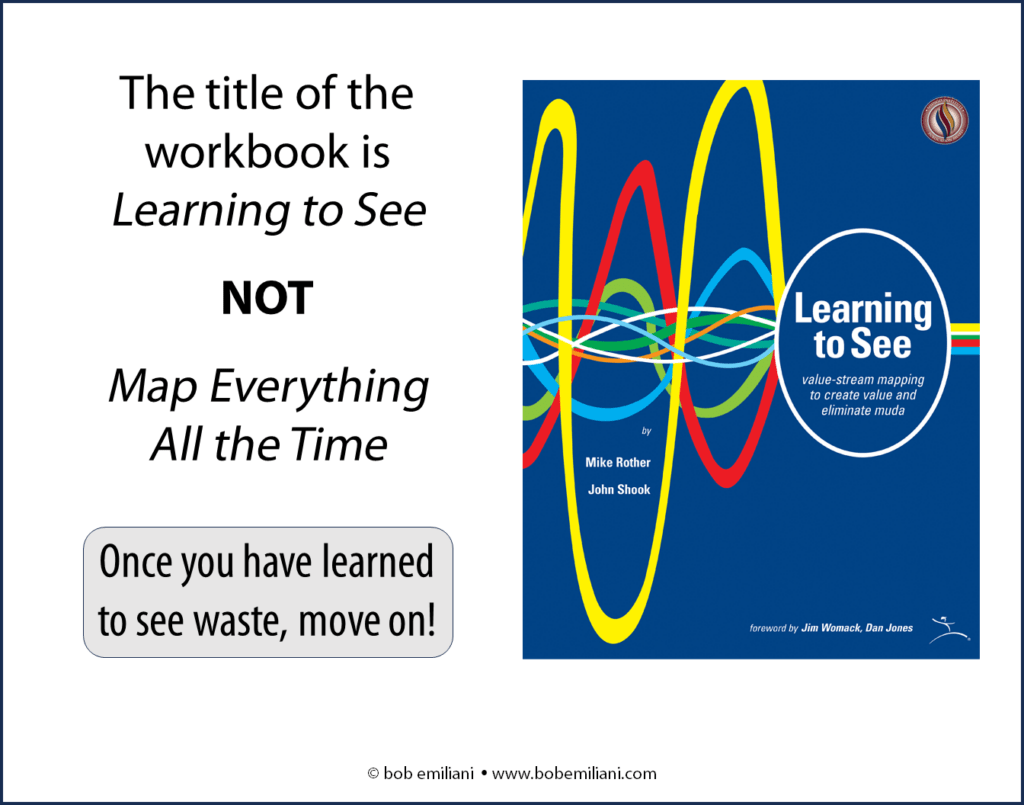It has been 25 years since the workbook Learning to See was published. The historical consequence of its publication is two-fold: 1) It was the first “Lean tool” book, and 2) People have become more accustomed to drawing value stream maps than eliminating waste.

After 25 years, it’s time to move on and return to the basics, kaizen; combined seeing and doing.
Before this workbook was published, we learned to see waste via genba kaizen. We had no need for either current or future state value stream maps. But today, VSMs have become entrenched as one of the go-to “Lean tools” that people must use prior to engaging in efforts to eliminate waste. And the process for creating value stream maps long ago became heavily bureaucratized, as I parodied in this blog post a decade ago.
In a recent LinkedIn conversation about the image shown above, Mike Rother said:
VSM is not for seeing waste. It’s for analyzing and designing material and information flows across multiple processes; figuring out what the construction sites are for achieving your challenging goal. The number 1 misinterpretation of VSM is to use it for a waste hunt.
Unfortunately, the workbook cover and contents speak a lot about seeing and eliminating waste. That’s okay, because waste continues to be a major focus of TPS, as does flow. Lean, however, has a different focus, value, which is nebulous absent the understanding of the varied types of waste.
The reality is that VSMs are not necessary for analyzing and improving or designing material and information flows. Additionally, future state VSMs are rarely created these days because most managers will not let workers create the future state — it is too disruptive to the current state. This subverts the challenge of designing flows.
Learning to See may have succeeded in helping people learn to see waste and creating material and information flows, but once that happens people can move on. Meaning, there is no need to create VSMs every time one sets out to improve a process. It is akin to arithmetic; once you learn it, you can do it in your head. Likewise, you can see waste, stagnation, and flow in your head.
TPS is a method for creating material and information flow, while Lean turned into a brand. As a brand, Lean readily consented to follow the market into the tools trap for the last 25 years. Lean tools and associated training are a lot easier to turn into a product to sell compared to kaizen, whose simultaneous focus is eliminating waste and developing people via hands-on work at the genba. The latter requires far more experience, knowledge, and wisdom than the former. Do the work of creating the flows and you will soon begin to possess the requisite experience, knowledge, and wisdom.
